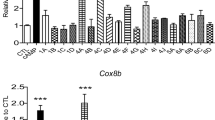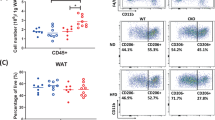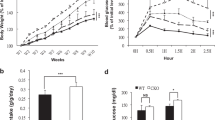Abstract
Background:
Adipocyte fatty acid-binding protein (FABP4) is a member of a highly conserved family of cytosolic proteins that bind with high affinity to hydrophobic ligands, such as saturated and unsaturated long-chain fatty acids and eicosanoids. Recent evidence has supported a novel role for FABP4 in linking obesity with metabolic and cardiovascular disorders. In this context, we identified FABP4 as a main bioactive factor released from human adipose tissue that directly suppresses heart contraction in vitro. As FABP4 is known to be a transport protein, it cannot be excluded that lipid ligands are involved in the cardiodepressant effect as well, acting in an additional and/or synergistic way.
Objective:
We investigated a possible involvement of lipid ligands in the negative inotropic effect of adipocyte factors in vitro.
Results:
We verified that blocking the CYP epoxygenase pathway in adipocytes attenuates the inhibitory effect of adipocyte-conditioned medium (AM) on isolated adult rat cardiomyocytes, thus suggesting the participation of epoxyeicosatrienoic acids (EETs) in the cardiodepressant activity. Analysis of AM for EETs revealed the presence of 5,6-, 8,9-, 11,12- and 14,15-EET, whereas 5,6-EET represented about 45% of the total EET concentration in AM. Incubation of isolated cardiomyocytes with EETs in similar concentrations as found in AM showed that 5,6-EET directly suppresses cardiomyocyte contractility. Furthermore, after addition of 5,6-EET to FABP4, the negative inotropic effect of FABP4 was strongly potentiated in a concentration-dependent manner.
Conclusions:
These data suggest that adipocytes release 5,6-EET and FABP4 into the extracellular medium and that the interaction of these factors modulates cardiac function. Therefore elevated levels of FABP4 and 5,6-EET in obese patients may contribute to the development of heart dysfunction in these subjects.
This is a preview of subscription content, access via your institution
Access options
Subscribe to this journal
Receive 12 print issues and online access
$259.00 per year
only $21.58 per issue
Buy this article
- Purchase on Springer Link
- Instant access to full article PDF
Prices may be subject to local taxes which are calculated during checkout




Similar content being viewed by others
References
Kershaw EE, Flier JS . Adipose tissue as an endocrine organ. J Clin Endocrinol Metab 2004; 89: 2548–2556.
Hauner H . The new concept of adipose tissue function. Physiol Behav 2004; 83: 653–658.
Look C, Morano I, Ehrhart-Bornstein M, Bornstein SR, Lamounier-Zepter V . Adipocyte-derived factors suppress heart contraction. Int J Obes (Lond) 2010; 35: 84–90.
Lamounier-Zepter V, Ehrhart-Bornstein M, Karczewski P, Haase H, Bornstein SR, Morano I . Human adipocytes attenuate cardiomyocyte contraction: characterization of an adipocyte-derived negative inotropic activity. FASEB J 2006; 20: 1653–1659.
Lamounier-Zepter V, Look C, Alvarez J, Christ T, Ravens U, Schunck WH et al. Adipocyte fatty acid-binding protein suppresses cardiomyocyte contraction: a new link between obesity and heart disease. Circ Res 2009; 105: 326–334.
Hertzel AV, Bernlohr DA . The mammalian fatty acid-binding protein multigene family: molecular and genetic insights into function. Trends Endocrinol Metab 2000; 11: 175–180.
Baxa CA, Sha RS, Buelt MK, Smith AJ, Matarese V, Chinander LL et al. Human adipocyte lipid-binding protein: purification of the protein and cloning of its complementary DNA. Biochemistry 1989; 28: 8683–8690.
Xu A, Wang Y, Xu JY, Stejskal D, Tam S, Zhang J et al. Adipocyte fatty acid-binding protein is a plasma biomarker closely associated with obesity and metabolic syndrome. Clin Chem 2006; 52: 405–413.
Furuhashi M, Fucho R, Gorgun CZ, Tuncman G, Cao H, Hotamisligil GS . Adipocyte/macrophage fatty acid-binding proteins contribute to metabolic deterioration through actions in both macrophages and adipocytes in mice. J Clin Invest 2008; 118: 2640–2650.
Hotamisligil GS, Johnson RS, Distel RJ, Ellis R, Papaioannou VE, Spiegelman BM . Uncoupling of obesity from insulin resistance through a targeted mutation in aP2, the adipocyte fatty acid binding protein. Science 1996; 274: 1377–1379.
Tuncman G, Erbay E, Hom X, De Vivo I, Campos H, Rimm EB et al. A genetic variant at the fatty acid-binding protein aP2 locus reduces the risk for hypertriglyceridemia, type 2 diabetes, and cardiovascular disease. Proc Natl Acad Sci USA 2006; 103: 6970–6975.
Uysal KT, Scheja L, Wiesbrock SM, Bonner-Weir S, Hotamisligil GS . Improved glucose and lipid metabolism in genetically obese mice lacking aP2. Endocrinology 2000; 141: 3388–3396.
Engeli S, Utz W, Haufe S, Lamounier-Zepter V, Pofahl M, Traber J et al. Fatty acid binding protein 4 predicts left ventricular mass and longitudinal function in overweight and obese women. Heart 2013; 99: 944–948.
Baessler A, Lamounier-Zepter V, Fenk S, Strack C, Lahmann C, Loew T et al. Adipocyte fatty acid-binding protein levels are associated with left ventricular diastolic dysfunction in morbidly obese subjects. Nutr Diabetes 2014; 4: e106.
Arnold C, Markovic M, Blossey K, Wallukat G, Fischer R, Dechend R et al. Arachidonic acid-metabolizing cytochrome P450 enzymes are targets of {omega}-3 fatty acids. J Biol Chem 2010; 285: 32720–32733.
Roman RJ . P-450 metabolites of arachidonic acid in the control of cardiovascular function. Physiol Rev 2002; 82: 131–185.
Spector AA . Arachidonic acid cytochrome P450 epoxygenase pathway. J Lipid Res 2009; 50: S52–S56.
Node K, Huo Y, Ruan X, Yang B, Spiecker M, Ley K et al. Anti-inflammatory properties of cytochrome P450 epoxygenase-derived eicosanoids. Science 1999; 285: 1276–1279.
Sudhahar V, Shaw S, Imig JD . Epoxyeicosatrienoic acid analogs and vascular function. Curr Med Chem 2010; 17: 1181–1190.
Harder DR, Campbell WB, Roman RJ . Role of cytochrome P-450 enzymes and metabolites of arachidonic acid in the control of vascular tone. J Vasc Res 1995; 32: 79–92.
Medhora M, Daniels J, Mundey K, Fisslthaler B, Busse R, Jacobs ER et al. Epoxygenase-driven angiogenesis in human lung microvascular endothelial cells. Am J Physiol Heart Circ Physiol 2003; 284: H215–H224.
Michaelis UR, Fisslthaler B, Barbosa-Sicard E, Falck JR, Fleming I, Busse R . Cytochrome P450 epoxygenases 2C8 and 2C9 are implicated in hypoxia-induced endothelial cell migration and angiogenesis. J Cell Sci 2005; 118: 5489–5498.
Chen JK, Capdevila J, Harris RC . Cytochrome p450 epoxygenase metabolism of arachidonic acid inhibits apoptosis. Mol Cell Biol 2001; 21: 6322–6331.
Dhanasekaran A, Al-Saghir R, Lopez B, Zhu D, Gutterman DD, Jacobs ER et al. Protective effects of epoxyeicosatrienoic acids on human endothelial cells from the pulmonary and coronary vasculature. Am J Physiol Heart Circ Physiol 2006; 291: H517–H531.
Campbell WB, Fleming I . Epoxyeicosatrienoic acids and endothelium-dependent responses. Pflugers Arch 2010; 459: 881–895.
Campbell WB, Gebremedhin D, Pratt PF, Harder DR . Identification of epoxyeicosatrienoic acids as endothelium-derived hyperpolarizing factors. Circ Res 1996; 78: 415–423.
Larsen BT, Miura H, Hatoum OA, Campbell WB, Hammock BD, Zeldin DC et al. Epoxyeicosatrienoic and dihydroxyeicosatrienoic acids dilate human coronary arterioles via BK(Ca) channels: implications for soluble epoxide hydrolase inhibition. Am J Physiol Heart Circ Physiol 2006; 290: H491–H499.
Oltman CL, Weintraub NL, VanRollins M, Dellsperger KC . Epoxyeicosatrienoic acids and dihydroxyeicosatrienoic acids are potent vasodilators in the canine coronary microcirculation. Circ Res 1998; 83: 932–939.
Carroll MA, Schwartzman M, Capdevila J, Falck JR, McGiff JC . Vasoactivity of arachidonic acid epoxides. Eur J Pharmacol 1987; 138: 281–283.
Imig JD, Navar LG, Roman RJ, Reddy KK, Falck JR . Actions of epoxygenase metabolites on the preglomerular vasculature. J Am Soc Nephrol 1996; 7: 2364–2370.
Katoh T, Takahashi K, Capdevila J, Karara A, Falck JR, Jacobson HR et al. Glomerular stereospecific synthesis and hemodynamic actions of 8,9-epoxyeicosatrienoic acid in rat kidney. Am J Physiol 1991; 261: F578–F586.
Imig JD . Epoxides and soluble epoxide hydrolase in cardiovascular physiology. Physiol Rev 2012; 92: 101–130.
Jiang H, McGiff JC, Fava C, Amen G, Nesta E, Zanconato G et al. Maternal and fetal epoxyeicosatrienoic acids in normotensive and preeclamptic pregnancies. Am J Hypertens 2013; 26: 271–278.
Minuz P, Jiang H, Fava C, Turolo L, Tacconelli S, Ricci M et al. Altered release of cytochrome p450 metabolites of arachidonic acid in renovascular disease. Hypertension 2008; 51: 1379–1385.
Theken KN, Schuck RN, Edin ML, Tran B, Ellis K, Bass A et al. Evaluation of cytochrome P450-derived eicosanoids in humans with stable atherosclerotic cardiovascular disease. Atherosclerosis 2012; 222: 530–536.
Ward NC, Croft KD, Blacker D, Hankey GJ, Barden A, Mori TA et al. Cytochrome P450 metabolites of arachidonic acid are elevated in stroke patients compared with healthy controls. Clin Sci 2011; 121: 501–507.
Ramirez CE, Shuey MM, Milne GL, Gilbert K, Hui N, Yu C et al. Arg287Gln variant of EPHX2 and epoxyeicosatrienoic acids are associated with insulin sensitivity in humans. Prostaglandins Other Lipid Mediat 2014. e-pub ahead of print 28 August 2014 doi:10.1016/j.prostaglandins.2014.08.001.
Moffat MP, Ward CA, Bend JR, Mock T, Farhangkhoee P, Karmazyn M . Effects of epoxyeicosatrienoic acids on isolated hearts and ventricular myocytes. Am J Physiol 1993; 264: H1154–H1160.
Rastaldo R, Paolocci N, Chiribiri A, Penna C, Gattullo D, Pagliaro P . Cytochrome P-450 metabolite of arachidonic acid mediates bradykinin-induced negative inotropic effect. Am J Physiol Heart Circ Physiol 2001; 280: H2823–H2832.
Gross GJ, Hsu A, Falck JR, Nithipatikom K . Mechanisms by which epoxyeicosatrienoic acids (EETs) elicit cardioprotection in rat hearts. J Mol Cell Cardiol 2007; 42: 687–691.
Nithipatikom K, Moore JM, Isbell MA, Falck JR, Gross GJ . Epoxyeicosatrienoic acids in cardioprotection: ischemic versus reperfusion injury. Am J Physiol Heart Circ Physiol 2006; 291: H537–H542.
Lee HC, Lu T, Weintraub NL, VanRollins M, Spector AA, Shibata EF . Effects of epoxyeicosatrienoic acids on the cardiac sodium channels in isolated rat ventricular myocytes. J Physiol 1999; 519: 153–168.
Lu T, Hoshi T, Weintraub NL, Spector AA, Lee HC . Activation of ATP-sensitive K(+) channels by epoxyeicosatrienoic acids in rat cardiac ventricular myocytes. J Physiol 2001; 537: 811–827.
Xiao YF, Huang L, Morgan JP . Cytochrome P450: a novel system modulating Ca2+ channels and contraction in mammalian heart cells. J Physiol 1998; 508: 777–792.
Chen J, Capdevila JH, Zeldin DC, Rosenberg RL . Inhibition of cardiac L-type calcium channels by epoxyeicosatrienoic acids. Mol Pharmacol 1999; 55: 288–295.
Cao H, Sekiya M, Ertunc ME, Burak MF, Mayers JR, White A et al. Adipocyte lipid chaperone AP2 is a secreted adipokine regulating hepatic glucose production. Cell Metab 2013; 17: 768–778.
Burton PB, Hogben CE, Joannou CL, Clark AG, Hsuan JJ, Totty NF et al. Heart fatty acid binding protein is a novel regulator of cardiac myocyte hypertrophy. Biochem Biophys Res Commun 1994; 205: 1822–1828.
Widstrom RL, Norris AW, Spector AA . Binding of cytochrome P450 monooxygenase and lipoxygenase pathway products by heart fatty acid-binding protein. Biochemistry 2001; 40: 1070–1076.
Hirose M, Sugiyama S, Ishida H, Niiyama M, Matsuoka D, Hara T et al. Structure of the human-heart fatty-acid-binding protein 3 in complex with the fluorescent probe 1-anilinonaphthalene-8-sulphonic acid. J Synchr Radiat 2013; 20: 923–928.
Widstrom RL, Norris AW, Van Der Veer J, Spector AA . Fatty acid-binding proteins inhibit hydration of epoxyeicosatrienoic acids by soluble epoxide hydrolase. Biochemistry 2003; 42: 11762–11767.
Kenchaiah S, Evans JC, Levy D, Wilson PW, Benjamin EJ, Larson MG et al. Obesity and the risk of heart failure. N Engl J Med 2002; 347: 305–313.
Kenchaiah S, Sesso HD, Gaziano JM . Body mass index and vigorous physical activity and the risk of heart failure among men. Circulation 2009; 119: 44–52.
Alpert MA . Obesity cardiomyopathy: pathophysiology and evolution of the clinical syndrome. Am J Med Sci 2001; 321: 225–236.
Peterson LR, Herrero P, Schechtman KB, Racette SB, Waggoner AD, Kisrieva-Ware Z et al. Effect of obesity and insulin resistance on myocardial substrate metabolism and efficiency in young women. Circulation 2004; 109: 2191–2196.
Poirier P, Giles TD, Bray GA, Hong Y, Stern JS, Pi-Sunyer FX et al. Obesity and cardiovascular disease: pathophysiology, evaluation, and effect of weight loss. Arterioscler Thromb Vasc Biol 2006; 26: 968–976.
Zhou YT, Grayburn P, Karim A, Shimabukuro M, Higa M, Baetens D et al. Lipotoxic heart disease in obese rats: implications for human obesity. Proc Natl Acad Sci USA 2000; 97: 1784–1789.
Acknowledgements
We thank the expert technical assistance of Uta Lehnert. This study was supported by the ‘Kompetenznetz Adipositas’ (Competence Network for Obesity) funded by the German Federal Ministry of Education and Research (grant number 01GI1122G).
Author information
Authors and Affiliations
Corresponding author
Ethics declarations
Competing interests
The authors declare no conflict of interest.
Rights and permissions
About this article
Cite this article
Lamounier-Zepter, V., Look, C., Schunck, WH. et al. Interaction of epoxyeicosatrienoic acids and adipocyte fatty acid-binding protein in the modulation of cardiomyocyte contractility. Int J Obes 39, 755–761 (2015). https://doi.org/10.1038/ijo.2014.193
Received:
Revised:
Accepted:
Published:
Issue Date:
DOI: https://doi.org/10.1038/ijo.2014.193
This article is cited by
-
Dynamic personalized risk prediction in chronic heart failure patients: a longitudinal, clinical investigation of 92 biomarkers (Bio-SHiFT study)
Scientific Reports (2022)
-
Landscape of heart proteome changes in a diet-induced obesity model
Scientific Reports (2019)
-
Cellular growth and tube formation of HTR8/SVneo trophoblast: effects of exogenously added fatty acid-binding protein-4 and its inhibitor
Molecular and Cellular Biochemistry (2018)
-
Metabolic functions of FABPs—mechanisms and therapeutic implications
Nature Reviews Endocrinology (2015)



